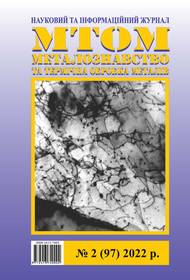Aspects of fractal modelling application
DOI:
https://doi.org/10.30838/J.PMHTM.2413.050722.7.858Keywords:
model, fractal, mechanical properties, structure, predictionAbstract
Purpose of research. More than 40 years ago, the theory of fractals applied to model of materials structure and properties firstly. During this time in many publications, the connection between the fractal (fractional) dimension of various materials structural elements and their physical and mechanical properties have confirmed. But unified approach to the organisation of fractal modelling not defined. This article analyses some steps of fractal modelling in order to assess their application to specific cases of predicting quality criteria for metals and concretes. Results. One of the fractal modelling algorithms used in materials science is considered. The algorithm consist of: calculation of the fractal dimension D for the research object according to F. Hausdorff's formula; definition of object self-similarity (invariance with reference to the representation scale); model investigation for compliance with the conditions corresponding to the sensitivity index; choice of a objective function (quality criterion), variables (fractal dimensions of structural elements) and reference points; formalization of the obtained results (selection of an adequate model describing the connection between the fractal structure of the material and its properties); estimation of the fractal object heterogeneity degree according to Rainier's formula for belonging to multifractals; interpretation of the obtained results. Examples of implementation for each step of the fractal modelling algorithm are given. The expediency of supplementing the considered algorithm due to the possibility of applying fractal formalism in the quality criteria ranking by the metal and concrete example is considered. The application of such a systematic approach in fractal modelling allows to improve the investigated material properties prediction based on the analysis of their structure and macrostructure. In turn, this leads to the finding of new structure-property regularities. Conclusions. Variants for supplementing the algorithm for fractal modelling of the structure and properties for metals (steel and cast iron) and concretes are proposed. The application of these algorithms allow the correlation and sensitivity estimation between the fractal dimension of the structure and the properties, as well as the ranking of the quality criteria for the materials based on the analysis of the working range of their values.

Downloads
Published
Issue
Section
License
Authors that are published in this journal agree to follow the conditions:
Authors reserve the right to the authorship of his work and cede the right to the journal of first publication of this work on conditions of the license under the Creative Commons Attribution License, which allows others to distribute it freely with the obligatory reference to the author of the original work and the first publication of the work in this journal.
